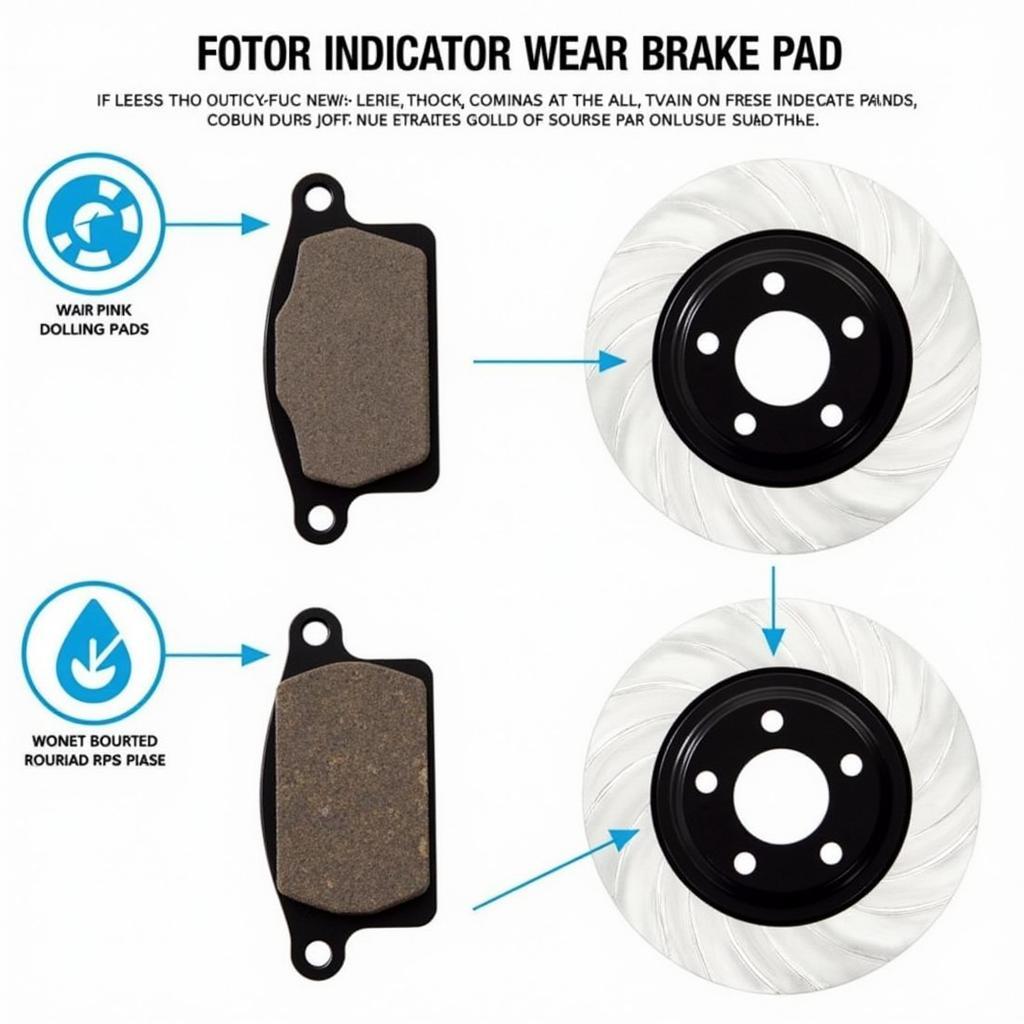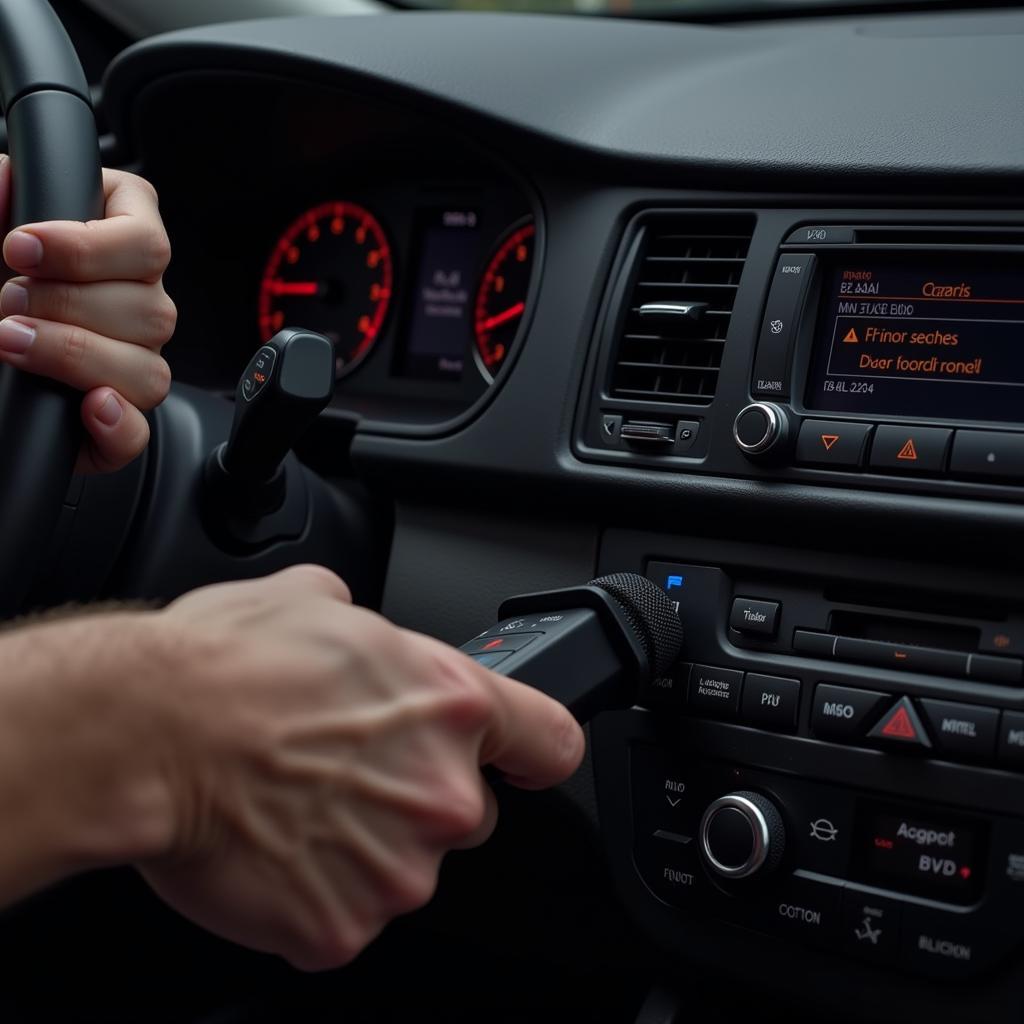The amber brake warning light on your Discovery 3 can be a cause for concern, but it doesn’t always signal a critical issue. Understanding what triggers this warning and how to address it can save you time, money, and potential headaches on the road. This guide provides a comprehensive overview of the amber brake warning light on the Discovery 3, empowering you to diagnose and potentially resolve the issue.
Deciphering the Amber Brake Warning Light
Unlike its red counterpart, which often indicates a serious braking system malfunction, the amber brake warning light usually points to a less critical issue. However, it’s crucial not to ignore this warning as it still signifies that a component within your braking system requires attention.
Common Causes of an Amber Brake Warning Light
Several factors can trigger the amber brake warning light on your Discovery 3:
- Worn Brake Pads: This is the most common culprit. Most Discovery 3 models have wear sensors in the brake pads that trigger the warning light when the pads thin down to a certain level.
- Low Brake Fluid Level: Brake fluid is the lifeblood of your braking system. A drop in brake fluid level could indicate a leak, which needs immediate attention.
- Faulty Brake Pad Wear Sensor: While designed for durability, these sensors can sometimes malfunction, triggering a false warning.
- ABS System Issue: Though less common, a problem with the Anti-lock Braking System (ABS) can also trigger the amber warning light.
Diagnosing the Problem
Determining the root cause of the amber brake warning light requires some investigation:
- Check Your Brake Fluid: Locate the brake fluid reservoir under the hood. If the fluid level is low, there might be a leak.
- Inspect Your Brake Pads: If you’re comfortable with basic car maintenance, you can visually check your brake pads for wear. Look for thin pads or metal-on-metal contact.
- Scan for Fault Codes: More advanced diagnostics involve using an OBD-II scanner to read fault codes stored in your Discovery 3’s computer. These codes can pinpoint the problem area.
What to Do When the Light Comes On
- Don’t Panic: An amber light is a caution, not an immediate emergency like a red light. However, it’s essential to address the issue promptly.
- Assess Your Driving Conditions: If the light comes on while driving, find a safe place to pull over and assess the situation.
- Seek Professional Help: If you’re unsure about diagnosing or fixing the problem yourself, it’s always best to consult a qualified mechanic, especially for brake-related issues.
Remote Diagnostics and Software Solutions
In today’s technologically advanced world, remote diagnostics and software solutions play an increasingly important role in automotive repair. Services like those offered by specialized technicians can remotely access your Discovery 3’s computer system to:
- Diagnose Fault Codes: Remotely read and interpret fault codes to identify the root cause of the warning light.
- Reset Warning Lights: After repairs, the warning light may need to be manually reset, which can sometimes be done remotely.
- Software Updates: Occasionally, software updates for your Discovery 3’s braking system might be necessary to address glitches or improve performance.
Preventive Maintenance is Key
Regular maintenance is the best way to prevent unexpected brake issues:
- Brake Pad Replacement: Adhere to the manufacturer’s recommended brake pad replacement schedule.
- Brake Fluid Flush: Have your brake fluid flushed and replaced every 2 years or as recommended by Land Rover.
- Regular Inspections: Incorporate visual inspections of your brakes into your routine maintenance checks.
“Regular brake maintenance is not just about safety; it’s about ensuring optimal performance and extending the lifespan of your vehicle’s braking system,” says Mark Stevenson, a senior automotive engineer with over 20 years of experience specializing in Land Rover vehicles.
Conclusion
While the amber brake warning light on your Discovery 3 might not signal an immediate crisis, it’s crucial to address the underlying issue promptly. By understanding the potential causes, taking appropriate diagnostic steps, and prioritizing preventative maintenance, you can ensure the continued safety and performance of your Land Rover Discovery 3. Remember, when it comes to brakes, erring on the side of caution is always the best approach.


